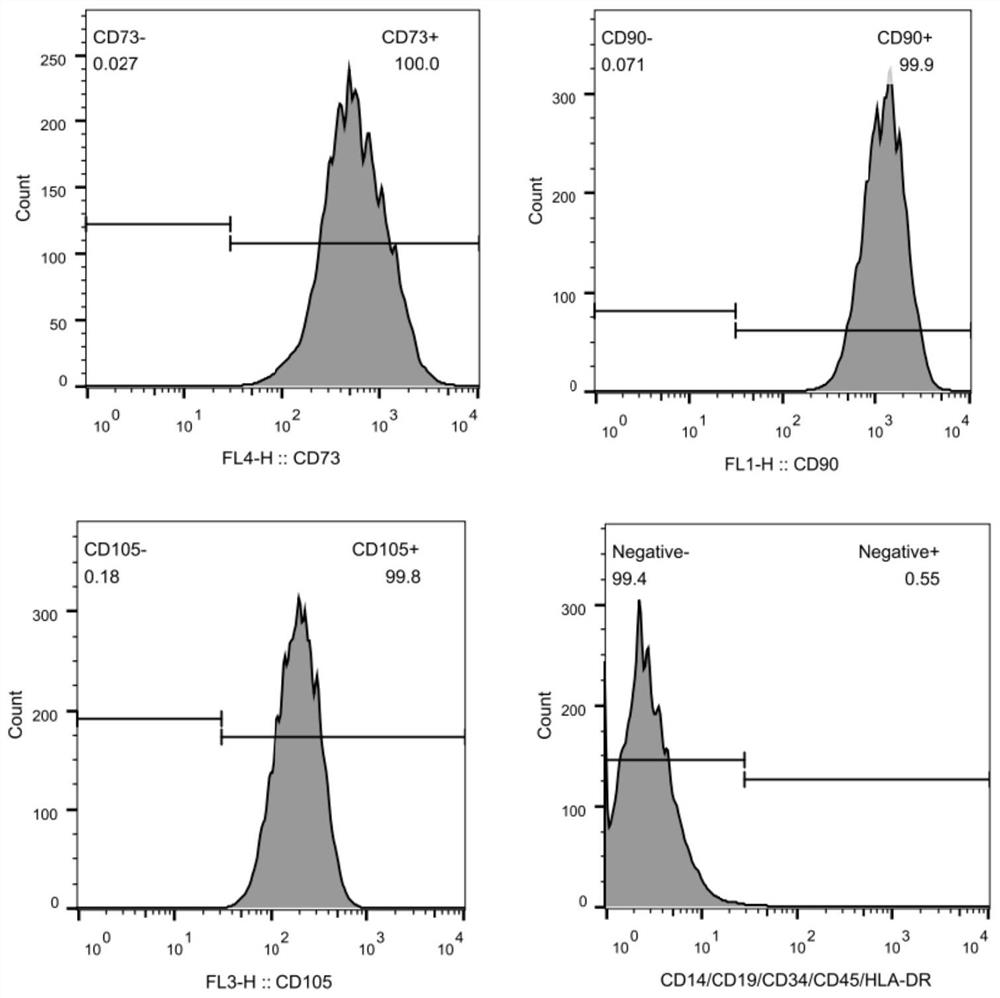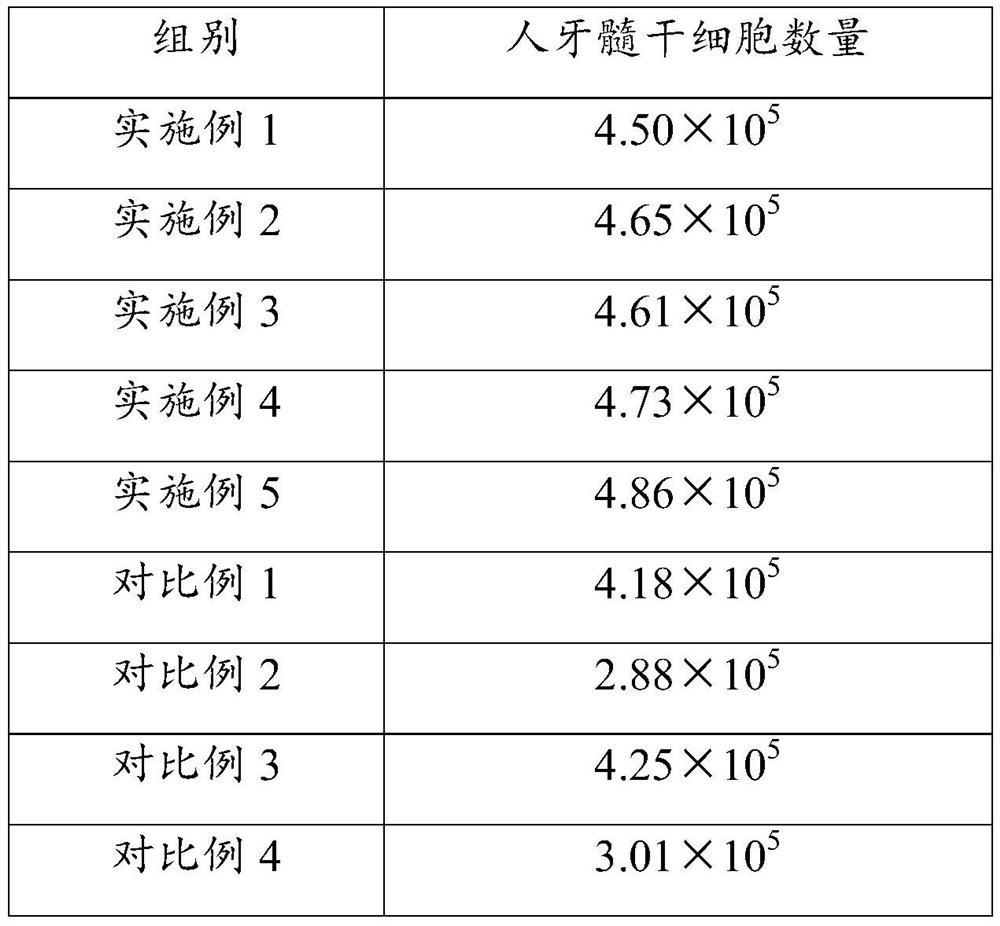Separation and amplification method and application of human dental pulp stem cells
A technology of dental pulp stem cells and dental pulp, which is applied in the field of separation and expansion of human dental pulp stem cells, can solve the problems of short induction time, small quantity, and low cost, and achieve the promotion of growth and proliferation, short adherence time, and differentiation powerful effect
- Summary
- Abstract
- Description
- Claims
- Application Information
AI Technical Summary
Problems solved by technology
Method used
Image
Examples
Embodiment 1
[0035]A method for separating and expanding human dental pulp stem cells, comprising the following steps:
[0036] S1. The third molars of adults aged 18-25 are collected, and the tooth tissue is required to be complete, free of caries, pulp disease and periodontal disease, etc. After the tooth is removed, the surface of the tooth tissue is cleaned and disinfected with PBS buffer, and then Put the teeth in a collection tube containing DMEM medium with a final concentration of 1% penicillin-streptomycin, send it to the laboratory with a constant temperature preservation box at 2-8°C, and place two 10cm sterile tubes in a biological safety cabinet. Add an appropriate amount of PBS buffer containing a final concentration of 1% penicillin-streptomycin double antibody to the petri dish. Use sterile tweezers to take out the teeth in the collection tube, put them into the above petri dish for cleaning and disinfection for 2-3 minutes, fully remove the periodontal soft tissue and bloo...
Embodiment 2
[0043] A method for separating and expanding human dental pulp stem cells, comprising the following steps:
[0044] S1. is the same as embodiment 1;
[0045] S2. Take the human dental pulp tissue and put it in the EP tube containing α-MEM medium, and cut the human dental pulp tissue into about 1.0mm with sterile ophthalmic scissors 3 Tissue pieces of different sizes, at a centrifugation speed of 1000rpm / min, centrifuge for 5min to remove the α-MEM medium, add collagenase I with a mass volume concentration of 3mg / ml, hyaluronidase with a mass volume concentration of 0.15%, and mass volume Dispase II with a concentration of 4 mg / ml was digested for 1 hour to obtain digested tissue and cell suspension;
[0046] S3. After the digestion, filter the digestion liquid with a filter with a diameter of 70 μm, centrifuge the filtrate to obtain cell pellets, and obtain human dental pulp stem cells;
[0047] S4. The human dental pulp stem cells obtained in step S3 were divided into 5×10 ...
Embodiment 3
[0051] A method for separating and expanding human dental pulp stem cells, comprising the following steps:
[0052] S1. is the same as embodiment 1;
[0053] S2. Take the human dental pulp tissue and put it in the EP tube containing α-MEM medium, and cut the human dental pulp tissue into about 1.0mm with sterile ophthalmic scissors 3 The size of the tissue pieces, at a centrifugation speed of 1200rpm / min, centrifuge for 10min to remove the α-MEM medium, add collagenase I with a mass volume concentration of 4mg / ml, hyaluronidase with a mass volume concentration of 0.2%, and mass volume Digest with dispase II at a concentration of 5 mg / ml for 1 hour to obtain digested tissue and cell suspension;
[0054] S3. After the digestion, filter the digestion liquid with a filter with a diameter of 80 μm, centrifuge the filtrate to obtain cell pellets, and obtain human dental pulp stem cells;
[0055] S4. The human dental pulp stem cells obtained in step S3 were divided into 5×10 3 cel...
PUM
 Login to View More
Login to View More Abstract
Description
Claims
Application Information
 Login to View More
Login to View More - R&D
- Intellectual Property
- Life Sciences
- Materials
- Tech Scout
- Unparalleled Data Quality
- Higher Quality Content
- 60% Fewer Hallucinations
Browse by: Latest US Patents, China's latest patents, Technical Efficacy Thesaurus, Application Domain, Technology Topic, Popular Technical Reports.
© 2025 PatSnap. All rights reserved.Legal|Privacy policy|Modern Slavery Act Transparency Statement|Sitemap|About US| Contact US: help@patsnap.com



